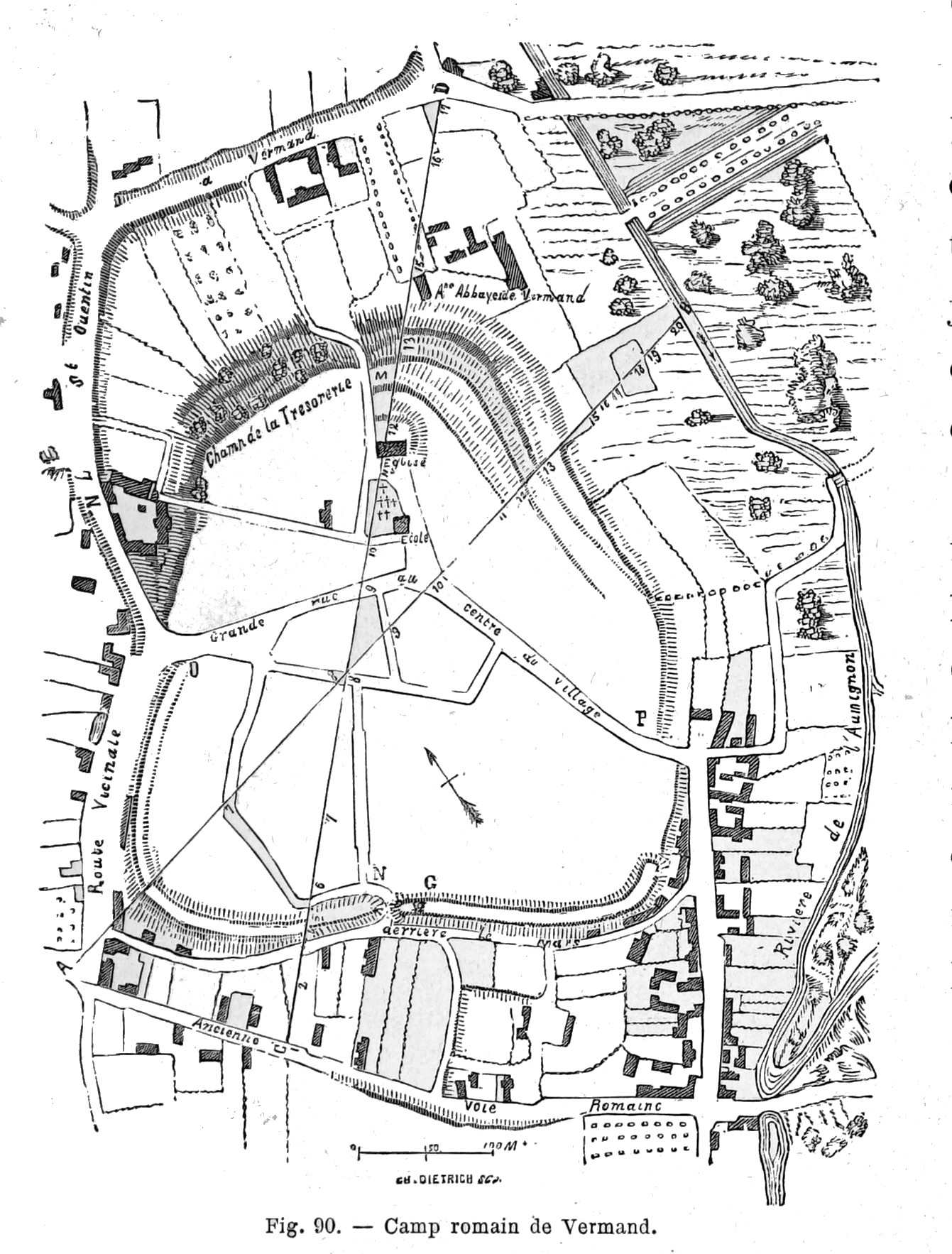|
Vermand
Vermand () is a commune in the Aisne department in Hauts-de-France in northern France. Vermand was probably the original capital of the Viromandui, after whom the region of Vermandois is named. It was later displaced by the Roman settlement of Augusta Viromanduorum, modern Saint-Quentin.Jean-Luc Collart and Michèle Gaillard"Vermand /Augusta Viromanduorum (Aisne)" ''Supplément à la Revue archéologique du centre de la France'', 25, 1 (2004): 493–96. Population See also *Communes of the Aisne department The following is a list of the 799 communes in the French department of Aisne. The communes cooperate in the following intercommunalities (as of 2020):Communes of Aisne [...More Info...] [...Related Items...] OR: [Wikipedia] [Google] [Baidu] |
Vermandois
Vermandois was a French county that appeared in the Merovingian period. Its name derives from that of an ancient tribe, the Viromandui. In the 10th century, it was organised around two castellan domains: St Quentin (Aisne) and Péronne (Somme). In today's times, the Vermandois county would fall in the Picardy region of northern France. Pepin I of Vermandois, the earliest of its hereditary counts, was descended in direct male line from the emperor Charlemagne. More famous was his grandson Herbert II (902–943), who considerably increased the territorial power of the house of Vermandois, and kept the lawful king of France, the unlucky Charles the Simple, prisoner for six years. Herbert II was son of Herbert I, lord of Péronne and St Quentin, who was killed in 902 by an assassin in the pay of Baldwin II, Count of Flanders. His successors, Albert I, Herbert III, Albert II, Otto and Herbert IV, were not as historically significant. In 1077, the last count of the first ... [...More Info...] [...Related Items...] OR: [Wikipedia] [Google] [Baidu] |
Viromandui
The Viromanduī or Veromanduī (Gaulish: *''Uiromanduoi'') were a Belgic tribe dwelling in the modern Vermandois region (Picardy) during the Iron Age and Roman periods. During the Gallic Wars (58–50 BC), they belonged to the Belgic coalition of 57 BC against Caesar. Name They are mentioned as ''Viromanduos'' and ''Viromanduis'' (var. ''vero''-) by Caesar (mid-1st c. BC), ''Viromanduos'' by Livy (late 1st c. BC), ''Veromandui'' (var. ''uir''-) by Pliny (1st c. AD), ''(Ou̓i)romándues'' () by Ptolemy (2nd c. AD), and as ''Veromandi'' by Orosius (early 5th c. AD). The ethnonym ''Viromanduī'' is a latinized form of Gaulish *''Uiromanduoi'' (sing. ''Uiromanduos''), which literally means 'horse-men' or 'male ponies'. It derives from the stem *''uiro-'' ('man') attached to ''mandos'' ('pony'). It should perhaps be interpreted as the 'Centaurs' or as the ' envirile in owning ponies'. Pierre-Yves Lambert has also proposed the meaning 'those who trample upon men', by comparing th ... [...More Info...] [...Related Items...] OR: [Wikipedia] [Google] [Baidu] |
Augusta Viromanduorum
Augusta Viromanduorum is an ancient Gallo-Roman settlement, corresponding to the modern city of Saint-Quentin ( Aisne, Hauts-de-France). Name The settlement is mentioned as ''Au̓goústa Ou̓iromandúōn'' () by Ptolemy (2nd c. AD), ''Augusta Veromandorum'' in the Antonine Itinerary, ''Aug. Viro Muduorum'' on the ''Tabula Peutingeriana'' (5th c.), ''Viromandensim oppidum'' by Gregory of Tours (6th c.), and possibly as ''Civitas Veromandorum'' by the '' Notitia Galliarum'' (ca. 400)., s.v. ''Augusta Viromanduorum'' and ''Viromandis''. History Augusta Viromandorum, was founded during the reign of Emperor Augustus, just 11km away from Vermand, the main oppidum of the Viromandui. Closer to an important trade route between Italy and the port of Boulogne, Augusta Viromandorum soon replaced Vermand as the main settlement of the region. It reached a size of 40–60ha during the Roman era, in the average of Gallo-Roman chief towns. During the 4th century, the lack of archaeological e ... [...More Info...] [...Related Items...] OR: [Wikipedia] [Google] [Baidu] |
Communes Of The Aisne Department
The following is a list of the 799 communes in the French department of Aisne. The communes cooperate in the following intercommunalities (as of 2020):BANATIC Périmètre des EPCI à fiscalité propre. Accessed 3 July 2020. * Communauté d'agglomération Chauny Tergnier La Fère * Communauté d'agglomération du Pays de Laon * [...More Info...] [...Related Items...] OR: [Wikipedia] [Google] [Baidu] |

